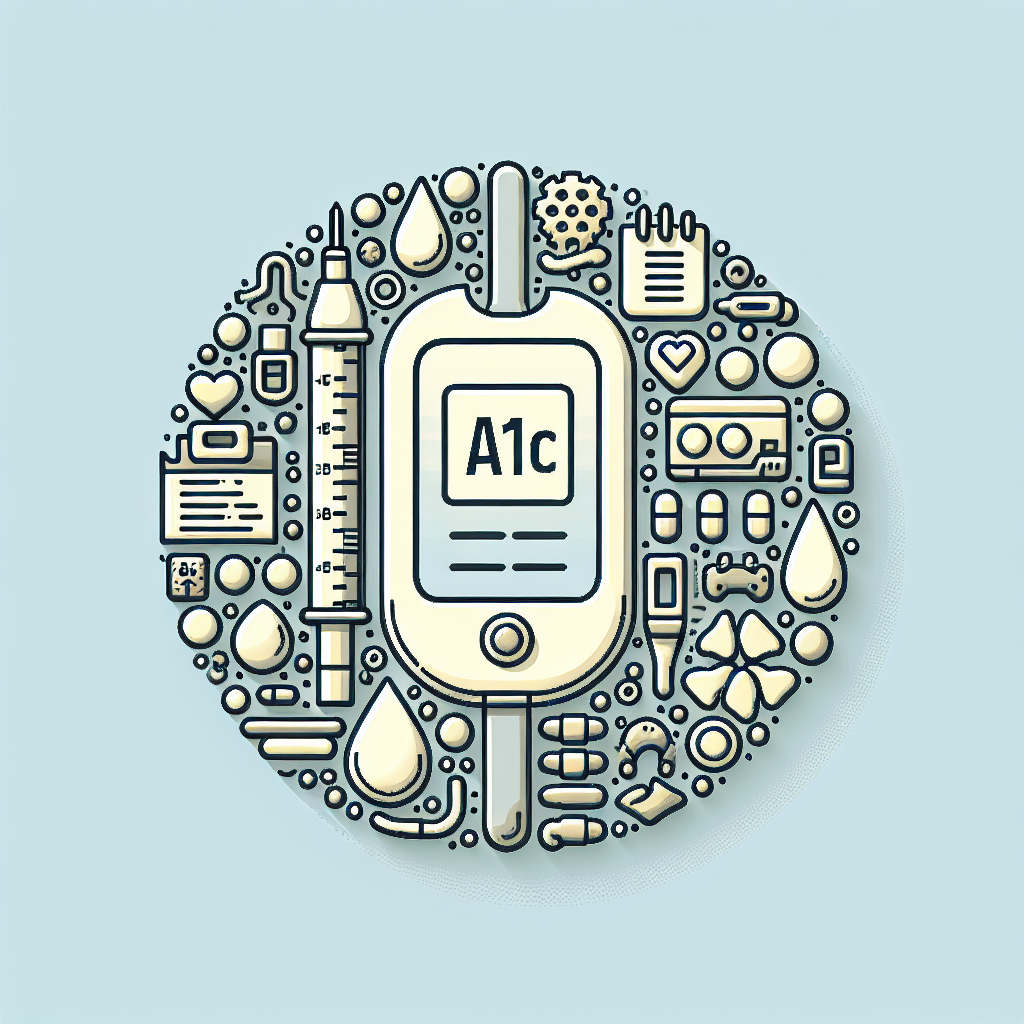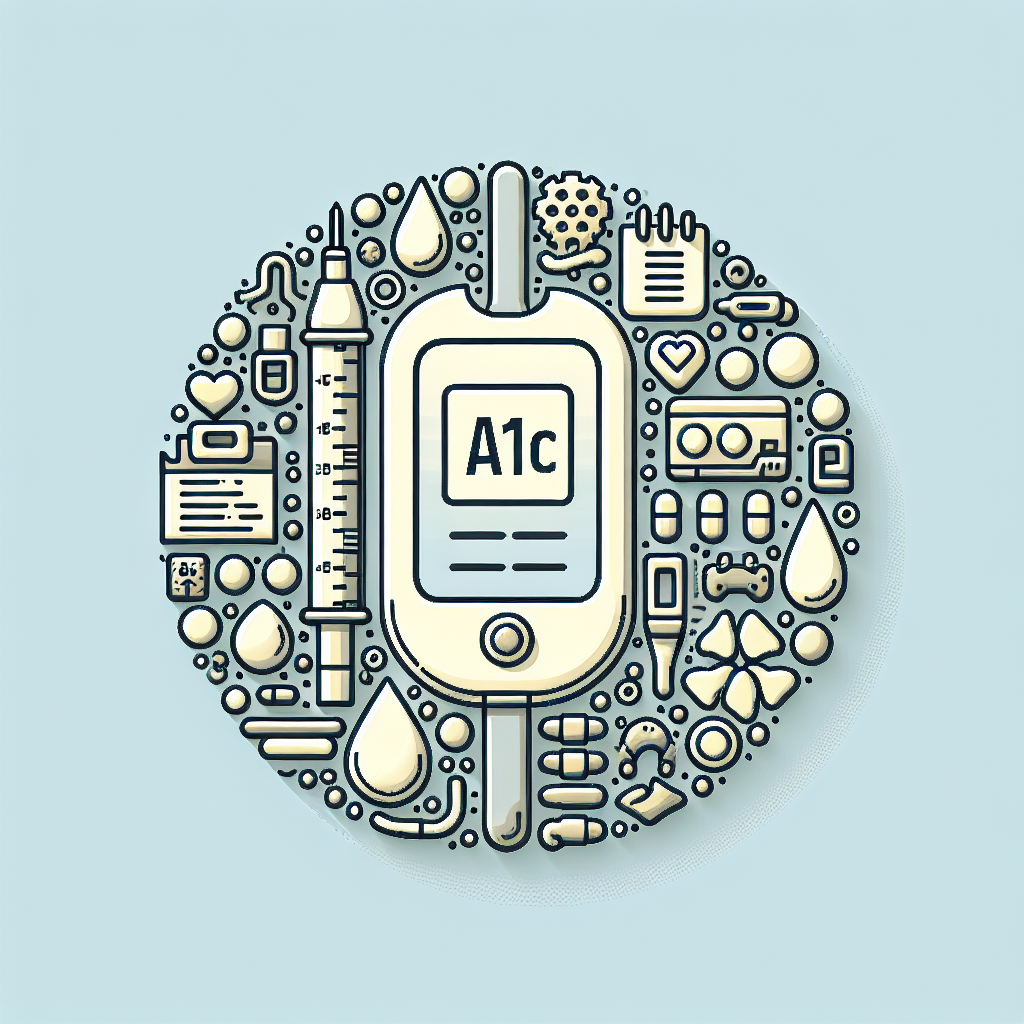Have you ever wondered if A1C is considered a preventive measure for your health? In this article, we will explore the role of A1C in preventive healthcare and shed light on its significance in monitoring and managing certain health conditions. By understanding the importance of A1C testing, you can take proactive steps towards maintaining your well-being and effectively managing your health. Let’s uncover the truth behind A1C and its preventive benefits.

What is A1C?
Definition
A1C, also known as hemoglobin A1C or glycated hemoglobin, is a blood test that measures the average blood sugar levels over the past two to three months. It reflects the percentage of hemoglobin that is glycated, or coated with sugar. The test provides valuable information about your overall blood glucose control and is commonly used to diagnose and monitor diabetes.
Purpose of A1C test
The primary purpose of the A1C test is to monitor and diagnose diabetes. It helps healthcare professionals understand how well you are managing your blood sugar levels over an extended period. By measuring the percentage of glycated hemoglobin, the test provides an accurate representation of your average blood glucose levels, allowing healthcare providers to tailor treatment plans and make informed decisions regarding your diabetes management.
Preventive Measures for Diabetes
Overview of diabetes prevention
Diabetes is a chronic condition characterized by high blood sugar levels, mainly caused by insulin resistance or the body’s inability to produce sufficient insulin. While diabetes cannot be cured, it can often be prevented through lifestyle modifications and interventions. Diabetes prevention focuses on reducing risk factors, such as obesity, sedentary lifestyle, and poor dietary habits, to delay or prevent the onset of the disease.
Role of A1C in preventive measures
A1C plays a crucial role in preventive measures for diabetes. Regular monitoring of A1C levels can identify individuals who are at a higher risk of developing diabetes. By detecting elevated levels of glycated hemoglobin, healthcare professionals can initiate preventive strategies early, such as dietary interventions, lifestyle modifications, and close monitoring, to help individuals maintain healthy blood sugar levels and prevent the progression to diabetes.
A1C as a Diagnostic Tool
How A1C is used for diagnosis
A1C is widely recognized as a diagnostic tool for diabetes. According to the American Diabetes Association (ADA), an A1C level of 6.5% or higher on two separate tests is indicative of diabetes. The test is convenient, as it does not require fasting and can be performed at any time during the day. A diagnosis based on A1C levels allows healthcare providers to intervene promptly, initiate treatment, and provide appropriate education and support to manage the condition effectively.
Difference between diagnostic and preventive approach
While A1C is primarily used as a diagnostic tool, it also holds importance in preventive approaches to diabetes. When used preventively, the focus is on maintaining A1C levels within a target range before reaching diagnostic thresholds. In the preventive approach, healthcare providers strive to identify individuals with elevated A1C levels, offer lifestyle interventions, and closely monitor their progress. This proactive approach aims to reduce the risk of individuals progressing to diabetes by providing timely interventions and support.
Ideal A1C Levels for Prevention
Target A1C levels for prevention
The ideal target A1C levels for prevention may vary depending on individual factors, such as age, overall health, and pre-existing medical conditions. Generally, an A1C level below 5.7% is considered normal, while levels between 5.7% and 6.4% are considered indicative of prediabetes. Prediabetes is a condition where blood sugar levels are higher than normal but not high enough to be classified as diabetes. Therefore, for preventive measures, the aim is to maintain A1C levels below 5.7% to minimize the risk of developing diabetes.
Factors influencing target levels
Several factors influence the target A1C levels for prevention. Age, overall health, family history of diabetes, and presence of other chronic conditions play a role in determining the ideal range. Healthcare providers consider these factors when setting individualized target levels and designing preventive strategies. Additionally, adherence to lifestyle modifications, dietary choices, and physical activity levels also contribute to achieving and maintaining target A1C levels for prevention.

Monitoring A1C for Prevention
Frequency of A1C monitoring
Regular monitoring of A1C is essential for prevention purposes. Initially, frequent monitoring may be recommended to establish a baseline and evaluate the effectiveness of lifestyle modifications and interventions. Once target levels are achieved and stabilized, the frequency of A1C testing may decrease but should still be performed regularly, typically every three to six months. This monitoring allows healthcare providers to assess long-term blood glucose control, detect any deviations from target levels, and make appropriate adjustments to preventive strategies.
Benefits of regular monitoring for prevention
Regular monitoring of A1C levels for prevention offers several benefits. It provides insight into the effectiveness of lifestyle modifications and interventions, allowing individuals to make necessary adjustments to maintain healthy blood sugar levels. Monitoring also helps identify potential risk factors or triggers, enabling healthcare professionals to intervene promptly. Additionally, regular A1C testing provides motivation and accountability for individuals, as it serves as a tangible measure of progress and success in preventing diabetes.
Lifestyle Changes for Prevention
Dietary modifications
Dietary modifications play a significant role in preventing diabetes and maintaining optimal A1C levels. Individuals at risk of diabetes are encouraged to adopt a balanced diet rich in fruits, vegetables, whole grains, lean proteins, and healthy fats. Limiting the intake of sugary and processed foods, as well as monitoring portion sizes, can help regulate blood sugar levels. Additionally, incorporating high-fiber foods and reducing the consumption of sugary beverages can contribute to better glycemic control.
Importance of physical activity
Regular physical activity is vital for the prevention of diabetes and achieving optimal A1C levels. Engaging in aerobic exercise, strength training, and flexibility exercises helps improve insulin sensitivity, promote weight loss or weight management, and manage blood sugar levels. Aiming for at least 150 minutes of moderate-intensity exercise per week, such as brisk walking or cycling, can significantly reduce the risk of developing diabetes and contribute to overall health and well-being.
Weight management
Maintaining a healthy weight is essential for preventing diabetes and managing A1C levels. Excess weight and obesity are significant risk factors for developing the disease. By incorporating lifestyle modifications aimed at weight management, such as healthy eating and regular exercise, individuals can achieve and maintain a healthy body weight. Weight loss, even as little as 5-10% of total body weight, can have a significant impact on reducing the risk of diabetes and improving A1C levels.

Medications for Prevention
Role of medications in preventing diabetes
Medications can be prescribed to individuals at high risk of developing diabetes to prevent its onset. These medications are typically used in conjunction with lifestyle modifications and aim to improve blood sugar control, enhance insulin sensitivity, and manage other risk factors. Medications such as metformin, a commonly prescribed oral antidiabetic drug, can be effective in reducing the risk of diabetes in high-risk individuals.
Use of A1C as a tool for medication effectiveness
A1C serves as a useful tool for assessing the effectiveness of medications in preventing diabetes. Regular A1C monitoring allows healthcare providers to evaluate the impact of medications on blood sugar control and adjust the treatment plan accordingly. By observing changes in A1C levels over time, healthcare professionals can determine the effectiveness of medications in maintaining target levels and preventing the progression to diabetes.
Controversies and Limitations
Debate over A1C as a preventive measure
While A1C is widely used as a diagnostic tool for diabetes, its role in preventive measures is still a subject of debate. Some healthcare professionals argue that relying solely on A1C to initiate preventive interventions may result in an overdiagnosis of prediabetes and unnecessary treatment. Others believe that A1C, when used in conjunction with other risk assessments and clinical judgment, can be an effective preventive measure. Further research and consensus are necessary to solidify the role of A1C in preventive approaches to diabetes.
Limitations of A1C in preventive approach
A1C has certain limitations when used in a preventive approach to diabetes. It provides an average measure of blood glucose over several months, but it may not capture short-term fluctuations or acute changes in blood sugar levels. Additionally, certain medical conditions, such as anemia or chronic kidney disease, can affect the accuracy of A1C results. It is crucial to consider these limitations when interpreting A1C levels for preventive purposes and to use it in conjunction with other clinical and risk assessment tools.

Cost and Accessibility
Affordability and availability of A1C testing
The cost and accessibility of A1C testing may vary depending on geographical location, healthcare system, and insurance coverage. In many countries, A1C testing is readily available in clinics, laboratories, and hospitals. The cost of the test is often covered by health insurance, especially when used for diagnostic purposes or in high-risk individuals. Additionally, A1C testing may also be available in community health fairs or screening programs, offering more affordable or even free options for individuals seeking preventive measures.
Barriers to widespread preventive use
Despite the availability of A1C testing, certain barriers hinder its widespread preventive use. Limited access to healthcare services, especially in underserved communities, can restrict individuals’ opportunities to undergo A1C testing and initiate preventive measures. Additionally, the lack of awareness and education about the significance of A1C in preventive approaches to diabetes may prevent individuals from seeking timely interventions. Addressing these barriers is essential to ensure equitable access to preventive measures for diabetes.
Conclusion
Summary of A1C as a preventive tool
A1C plays a crucial role in preventive measures for diabetes. While primarily used as a diagnostic tool, A1C monitoring can help identify individuals at risk of developing diabetes and initiate timely preventive interventions. By maintaining A1C levels within target ranges, individuals can reduce the risk of progressing to diabetes and improve long-term health outcomes.
Future prospects for preventive measures
The use of A1C in preventive approaches to diabetes has shown promising results. As research continues to explore the effectiveness of A1C as a preventive tool, further advancements in identifying high-risk individuals and tailoring interventions are expected. Additionally, increased awareness, education, and accessibility to A1C testing can pave the way for widespread preventive measures and ultimately contribute to a significant reduction in the global burden of diabetes.

